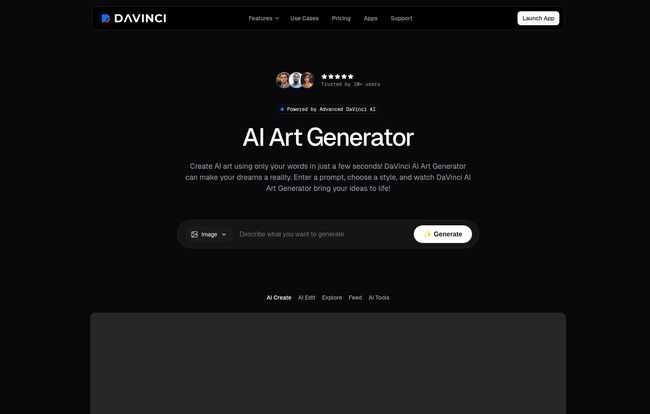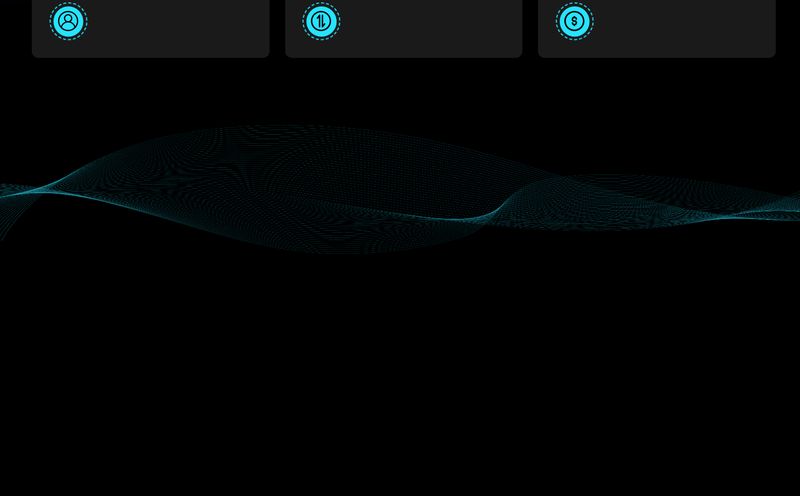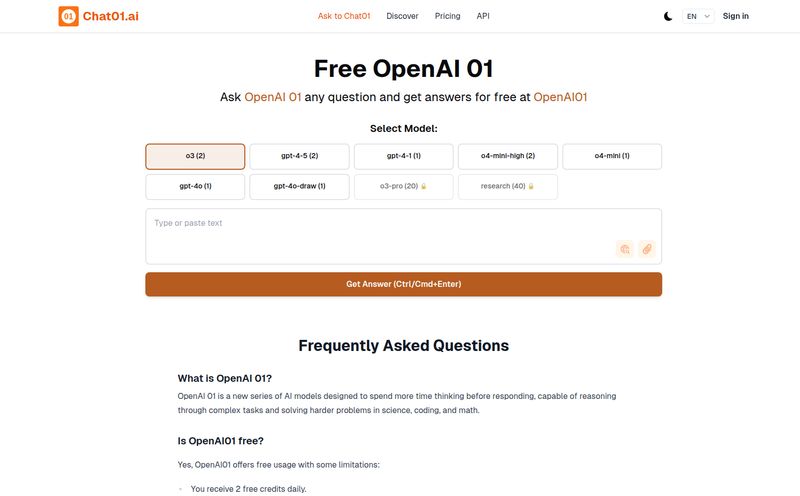In the last couple of years, the internet has been absolutely flooded with AI art generators. It feels like every other day there's a new tool promising to turn your half-baked thoughts into a digital Mona Lisa. As someone who's been kicking around the SEO and digital content space for ages, I've seen these kinds of gold rushes before. Some tools flash and fade, while others stick around and genuinely change how we work. So, when DaVinci AI crossed my desk, my first thought was, “Okay, what makes you so special?”
I’ve spent the last week putting it through its paces—for blog images, for social media concepts, and, I admit, for creating some truly unhinged pictures of squirrels in historical costumes. Just for fun. And I’ve got some thoughts. This isn’t just another press release rehash; this is a hands-on, no-fluff look at whether DaVinci AI is worth your time and, potentially, your money.
What on Earth is DaVinci AI Anyway?
At its core, DaVinci AI is a text-to-image generator. You type in a description (we call 'em prompts in this business), and the AI spits out an image. Simple enough. But where it gets interesting is that DaVinci AI isn't a one-trick pony. It’s more like a master key. Instead of building just one proprietary image model from scratch and locking you into it, it gives you access to a suite of some of the best AI models on the market, all under one clean, easy-to-use roof. Think of it less like a single artist and more like an entire art studio with different specialists at your beck and call.
It's available on your browser, and they have apps for both iOS and Android, which is a bigger deal than it sounds. Inspiration doesn't always strike when you're sitting at your desk, you know?
First Impressions and The Engine Room
Logging in for the first time, I was immediately struck by how… uncluttered it is. The dark-themed interface is easy on the eyes, and there aren't a million buttons screaming for your attention. It feels intuitive, which is a breath of fresh air compared to some platforms that feel like you need a pilot's license to operate. You’ve got your prompt bar front and center, just daring you to type something creative.
The Power Trio of AI Models
This is the secret sauce, in my opinion. DaVinci AI doesn’t just give you one AI brain to work with. It gives you three heavy-hitters:
- Stable Diffusion XL (SDXL): This is the workhorse for many AI artists. It’s known for its incredible versatility and artistic flair. You can get some really creative, stylistic results with SDXL.
- DALL·E 3: OpenAI's golden child. DALL·E 3 is an absolute wizard at understanding and following complex prompts. If you ask for “a blue banana sitting next to a tiny, knitted armchair,” it’s going to give you exactly that. Its a great tool for when you need literal interpretations.
- DaVinci XL: Their own in-house model. I found this one to be a solid all-rounder, producing some stunningly photorealistic images that needed very little tweaking. It’s like they took the best bits of the others and made their own special blend.
Having access to all three in one place is a game-changer. It’s like having a DSLR camera with a whole bag of different lenses. One day you need a wide-angle for a landscape, the next you need a macro lens for fine details. You can experiment and see which model best captures the vision in your head without having to jump between three different platforms and subscriptions.

Visit DaVinci AI
Putting It To The Test: My Experience
Alright, theory is great, but how does it actually perform? I decided to create a header image for a fictional blog post about urban gardening. My prompt was something like: “Photorealistic image of a lush rooftop garden in a futuristic city at sunset, glowing neon signs in the background, cinematic lighting, ultra-detailed.”
I ran this prompt through all three models. DALL·E 3 gave me something that was technically perfect but a little sterile. SDXL produced a more artistic, painterly version which was beautiful, but not quite what I wanted. DaVinci XL, however, nailed the photorealistic vibe with incredible lighting. That was my winner.
Refining and Tweaking Your Art
But the creation process doesn't stop there. Once you have a base image, DaVinci gives you tools to refine it. You can generate variations, which is fantastic for when you’re close but not quite there. You can also upscale your image to a higher resolution, a must for anyone wanting to use these images professionally. They also have an in-painting feature, which lets you select a part of the image and regenerate just that area. Want to change the color of a car in the background without re-rolling the whole image? That's what in-painting is for. It's a feature that separates the serious tools from the toys.
What I Genuinely Liked About DaVinci AI
After a week of heavy use, a few things really stand out. The multi-model access is clearly the headline feature. It saves time, money, and creative energy. The user interface is just plain pleasant to use—no headaches. And the mobile apps are genuinely well-made and useful, not just clunky web wrappers. I've found myself generating ideas on my phone while waiting in line for coffee and then fine-tuning them later on my desktop. The workflow just… works.
Where It Stumbles a Little
No tool is perfect, right? While the in-painting and editing features are great to have, they could be a tad more polished. Sometimes the selection tool was a bit finicky, and it took a few tries to get the result I wanted. It's not a deal-breaker by any means, but it feels like an area with room for improvement compared to, say, a dedicated photo editor like Photoshop.
And, of course, the free version. It’s great for getting a feel for the platform, but you will hit the limits pretty quickly if you're doing any serious work. That’s just the nature of the beast with these powerful AI models; they're expensive to run.
The All-Important Question: DaVinci AI Pricing
Okay, let's talk turkey. How much does all this cost? They have a pretty straightforward pricing structure.
| Plan | Price | Key Features |
|---|---|---|
| Free | Free | Basic access to AI image generation (with limitations). |
| PRO (1 Month) | $19.99 | Unlimited generation, advanced models, high-res outputs, customization tools. |
| PRO (1 Year) | $59.99 | All the monthly features plus exclusive new tools as they're released. |
Honestly, that yearly plan is ridiculously good value. It comes out to about $5 a month. For unlimited access to DALL·E 3 and SDXL alone, that's a steal. Many platforms charge you more than that for access to just one of those models. If you're a blogger, marketer, or creator who needs a steady stream of unique images, the yearly PRO plan is a no-brainer.
So, Who is This Really For?
I see DaVinci AI fitting perfectly for a few groups. Content creators and bloggers who need high-quality, unique featured images without breaking the bank on stock photos. Social media managers who need to pump out eye-catching visuals on a daily basis. Artists and designers looking for a powerful brainstorming and concepting tool. And frankly, hobbyists who just want to play with the best AI tech without the steep learning curve of tools like ComfyUI or a self-hosted Stable Diffusion.
My Final Verdict on DaVinci AI
So, back to my original question: Is DaVinci AI just another face in the crowd? My answer is a resounding no. It carves out a smart niche for itself by being an aggregator of excellence. It’s not trying to reinvent the wheel; it’s giving you the best set of wheels for whatever road you're on, and a really nice car to put them on.
While the editing tools could use a little fine-tuning, the core offering—easy, affordable access to the top AI image models in one place—is incredibly compelling. It lowers the barrier to entry for creating truly stunning, professional-grade AI art. If you've been on the fence about diving into AI image generation, DaVinci AI is one of the most accessible and powerful starting points I’ve seen yet.
Frequently Asked Questions
- Is DaVinci AI free to use?
- Yes, there is a free plan that gives you limited access to the AI image generation features. It's a great way to test the platform, but for regular use, you'll likely want to upgrade to a PRO plan for unlimited generations and advanced features.
- What AI models does DaVinci AI use?
- DaVinci AI provides access to a powerful trio of models: Stable Diffusion XL (SDXL), DALL·E 3 from OpenAI, and their own proprietary model, DaVinci XL.
- Can I use the images I create for commercial purposes?
- Generally, with paid plans on these types of services, you own the rights to the images you create. However, I always advise checking the platform's latest Terms of Service to be 100% certain, as policies can change.
- How does DaVinci AI compare to Midjourney?
- Midjourney is known for its highly artistic and opinionated style, and it operates primarily through Discord, which can be a hurdle for some. DaVinci AI is more straightforward, with a clean web and mobile interface, and offers more variety in art styles by giving you direct access to models like DALL·E 3 and SDXL.
- Is DaVinci AI good for beginners?
- Absolutely. In fact, it's one of the best platforms for beginners I've come across. The simple interface and the ability to test different high-end models without any complex setup make it incredibly user-friendly.



